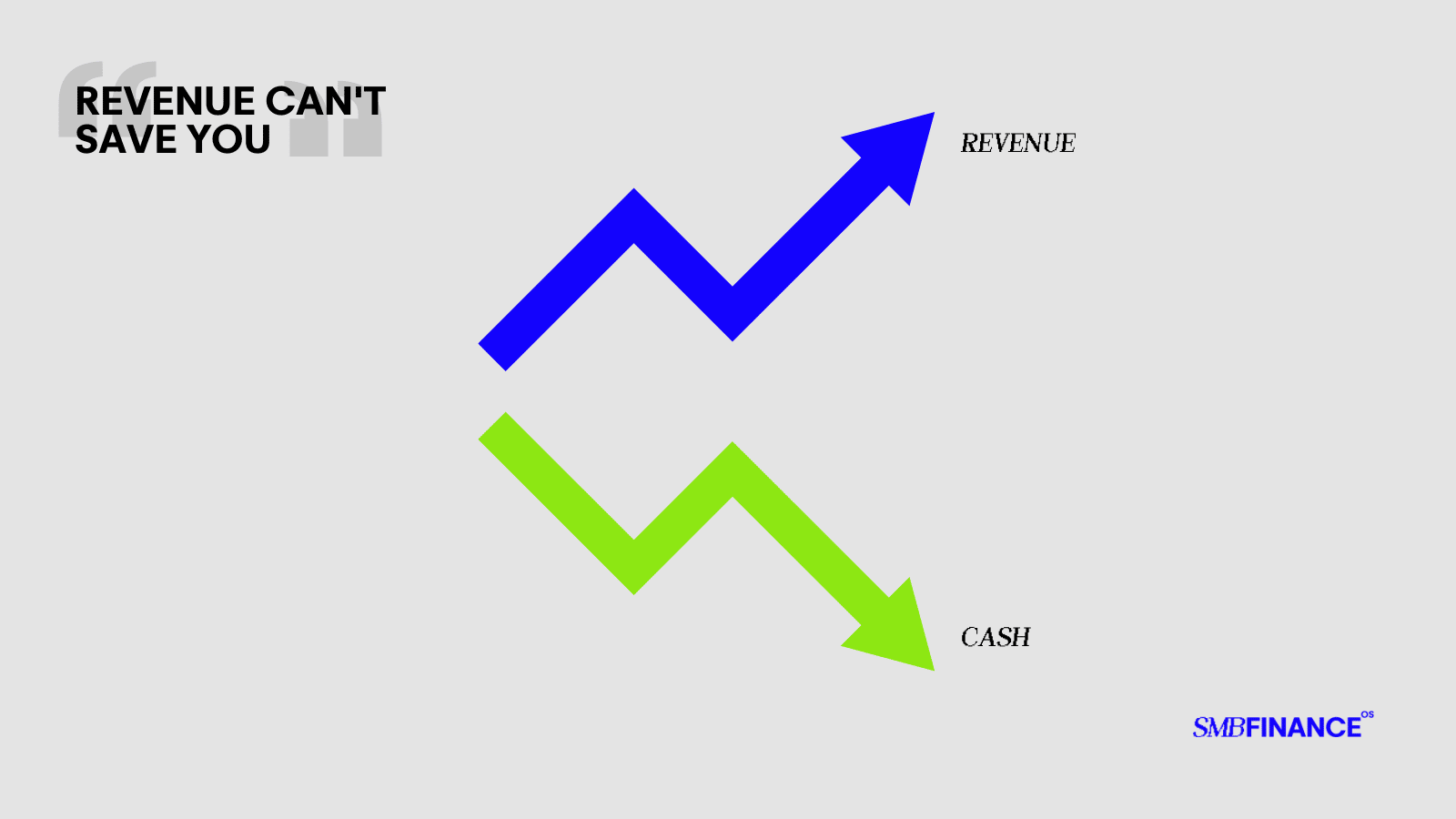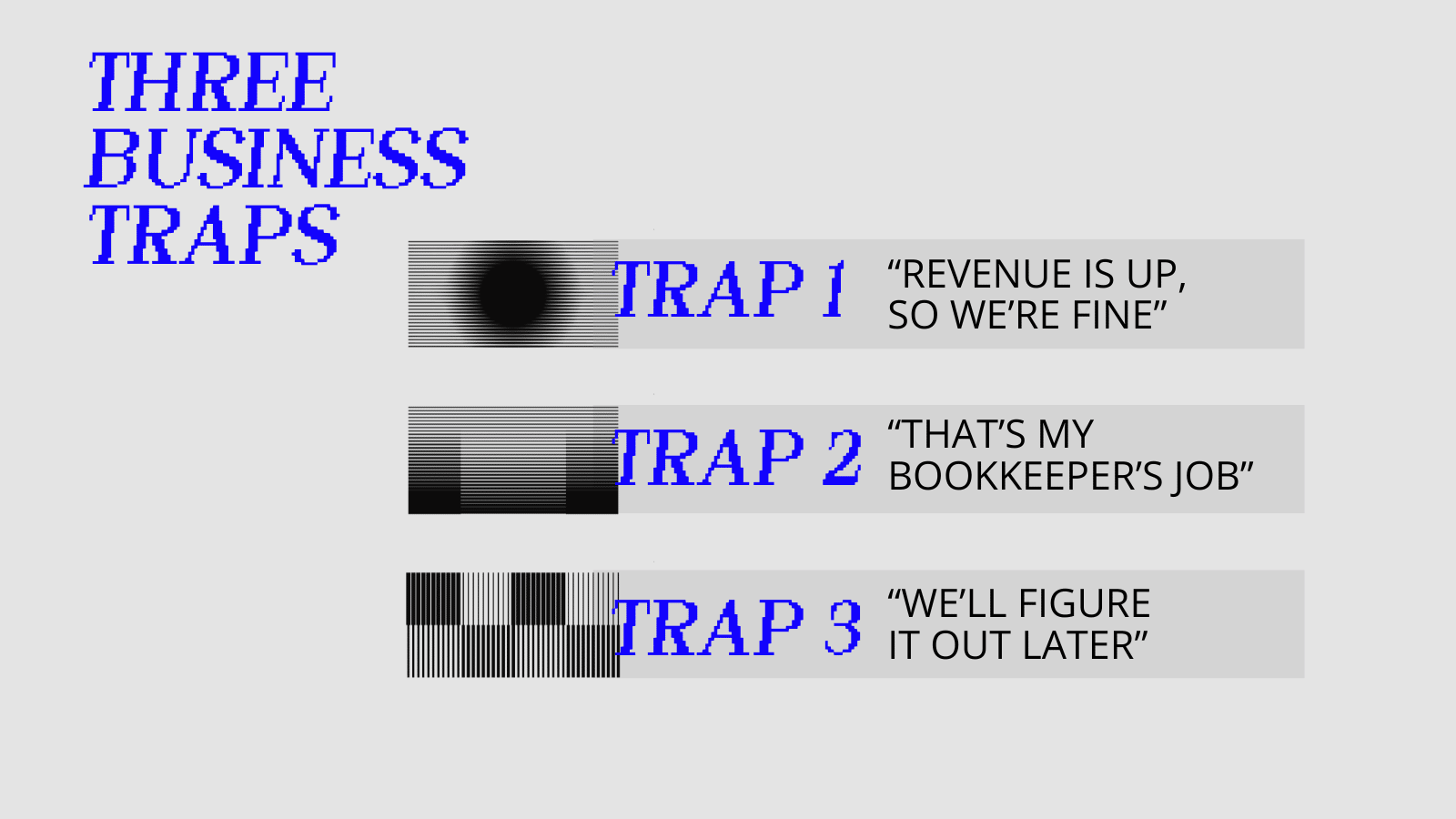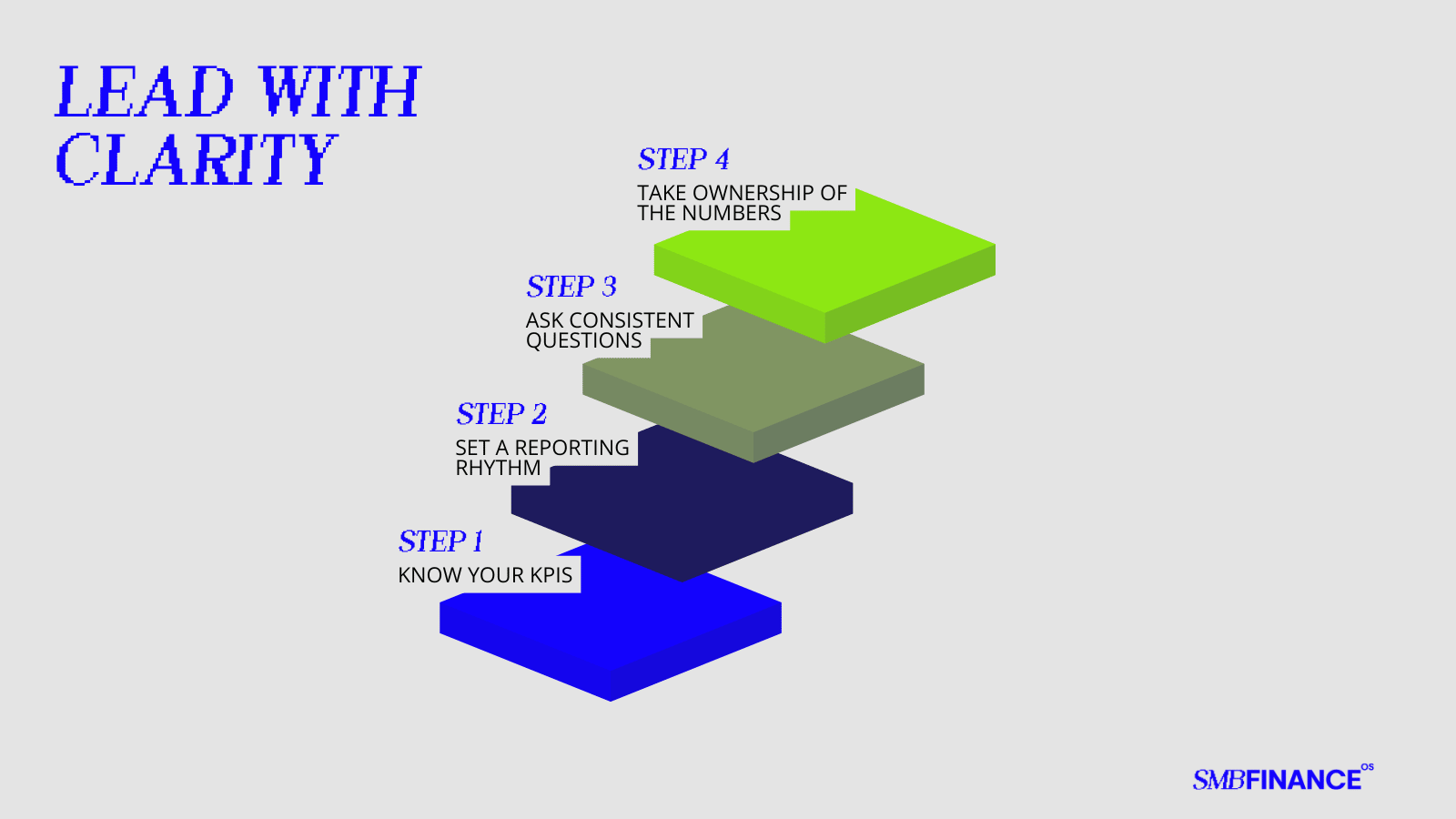He thought the business was healthy. Sales were up. Reviews were strong. The product was moving. But behind the scenes, cracks were forming.
Every month, he was dipping into a little more debt… a new loan here, a credit line there… just to float the business until the next big marketing push. It wasn’t reckless. In his mind, it was strategic. A short-term stretch to get over the next hump.
Then his supplier raised prices. Not by a lot at first, but steadily, and with restrictions. His resale pricing was boxed in by contracts and customer expectations. There wasn’t room to pass the cost on.
So he borrowed again. The business wasn’t losing money, he told himself. It just had cash flow issues.
Fast forward six months, and the owner was backed into a corner. The margins that once funded growth have vanished. The weight of the debt is starting to feel suffocating. He can’t lower prices, can’t raise them, can’t spend more on ads, and can’t stop either. He’s stuck.
What’s wild is, none of this came from one bad decision.
It came from not making a few good ones early enough. From not understanding the real numbers beneath the surface: gross margins, fixed overhead, CAC, payback periods. He saw the sales. He didn’t see the erosion.
And now he’s left with a painful truth: Revenue doesn’t save you if the numbers underneath don’t work.

His business is of the size that he has outgrown his gut instinct.
You can build something impressive just by being scrappy and decisive: watching bank balances, reacting to demand, pulling late nights to cover the gaps. In fact, that kind of hustle is how most companies get off the ground.
But eventually, the math catches up.
Margins get thinner. Cash dries up. The levers you’ve always pulled stop working. And if you haven’t built a habit of understanding your numbers, you don’t know why and you’re left trying to solve a puzzle with half the pieces missing.
This is the inflection point so many business owners hit and where financial fog becomes a silent killer.
You’re not flying blind because you can’t see the numbers.
You’re flying blind because you’ve never learned which numbers to look at, or what they’re trying to tell you.
And the financial consequences are very real:
- You can sell a million dollars and still lose money.
- You can grow yourself straight into insolvency.
- You can “feel” like it’s working… until your cash says otherwise.
The hardest part is this: most business owners don’t realize they’re exposed until it’s too late. They don’t realize they’re bleeding until the bandages run out.
So how do we fix this? First, we acknowledge the traps. Second, we install the right practices and mindsets.
THE THREE TRAPS
Most business owners don’t ignore their numbers on purpose.
They don’t wake up thinking, “Let me make decisions that could sabotage everything I’ve built.”
But numbers feel technical. Cold. Intimidating. They’re not why you started the business, and they’re not where you naturally want to spend your energy.
So instead, you put your head down and keep going, hoping that if sales are coming in, things must be working.
But you can’t fix what you won’t face.
And if you don’t understand the story your numbers are telling, they’ll start writing a story you don’t like. Quietly. Slowly. And then, all at once.
Let’s talk about the three most common traps.

“REVENUE IS UP, SO WE’RE FINE”
This is the most dangerous lie in business because it feels like progress.
I’ve watched owners increase top-line revenue by 30% (or more) and end up with less cash at the end of the year. Why? Because they never checked their margins, thought about their supplier terms, or tracked the hidden costs that creeped up.
They assumed growth was strength. But growth, without control, just scales the chaos.
A $5 million company at 10% net profit is healthier than a $10 million company burning cash.
But we don’t celebrate discipline, we celebrate volume.
So when your team hits a new sales record, you toast it. You don’t ask: “How much did it cost us to hit that number?” You just hope the cash will show up later.
But hope isn’t a strategy.
And growth that isn’t profitable? It’s the same as running on a treadmill… going fast but going nowhere.
“THAT’S MY BOOKKEEPER’S JOB”
Replace bookkeeper with accountant, accounting, or CFO… doesn’t matter. It all comes with the same logic of “I’ve got people who handle the finance. That’s what I hired them for.”
But understanding your numbers isn’t about doing the books. It’s about knowing what story the books are telling you.
Even the best bookkeepers, Controllers, and CFOs don’t have the same level of care as you, the owner. I was the CFO for two different small businesses before becoming a fractional CFO and I can tell you it’s true. I was bought in… “all the way.” But the burden I feel now, as a business owner, is way more than I could ever feel as an employee.
Delegate the preparation? Smart. But not reading the reports, asking questions, or digging into the details? Dumb.
You and you alone, as a business owner, are responsible for understanding the story today and what it means for the future.
We tell our FCFO clients that you can offload the work, but not the understanding.
Take ownership and get to know your numbers.
“WE’LL FIGURE IT OUT LATER”
This one sounds like optimism. We’re so busy now, we’ll keep our head down doing the hard work and figure it out. It feels scrappy. Forward-looking.
But in practice? It’s procrastination.
You delay the hard conversations. The margin analysis. The real cash forecast. Because you’re busy. Because you’re in the middle of a launch. Because it’s just not the right time.
Until suddenly… it’s thrust upon you. Suddenly the loan doesn’t get renewed. The supplier raises prices. The credit cards hit the limit. The investor asks for a breakdown you can’t give.
You don’t rise to the level of your ambition… you fall to the level of your systems (thank you, James Clear).
And when you haven’t built any, the only system left is scrambling.
This is how smart people run out of money. Not because they were reckless. But because they never slowed down long enough to understand what the numbers were trying to say.
—
These traps don’t just hurt your ego.
They hurt your margins. Your cash flow. Your optionality.
Here’s what I’ve seen, repeatedly, when the numbers are ignored:
- You hire before you can afford it, then have to cut the team you just trained.
- You discount too deeply trying to drive volume, and end up underwater.
- You borrow to survive, thinking “just one more month” will turn it all around.
- You hold onto unprofitable customers because “they send a lot of volume.”
- You scale an offer that never worked on paper in the first place.
Every one of these is avoidable. But only if you’re paying attention.
And the worst part? When it hits, you have to stop leading and start reacting.
You become a firefighter instead of a founder.
That’s what not knowing your numbers really costs you: Your ability to lead with clarity.
Ready to reclaim that?
Let’s move on to the fix.
PRACTICES & MINDSETS
The goal here isn’t to make you a spreadsheet junkie.
It’s to give you control over your business, your decisions, and your future.
You don’t need to know every debit and credit. But you do need to know what your business is trying to tell you.
The good news? That starts with a few simple practices, not an MBA.

KNOW YOUR KPIS
This is not about memorizing your Financial Statements.
It’s about seeing the story. Asking better questions. Building fluency.
At minimum, every business owner should understand:
- Revenue: Where’s it coming from? What’s growing? What’s shrinking?
- Gross margin: How much do you keep after direct costs?
- Operating expenses: What’s fixed vs variable? What’s bloated?
- Net profit: What are you actually keeping?
- Cash: How much do you have, and how long will it last?
- Forecast: What happens if nothing changes? What if something does?
This is a way oversimplification, but we can’t start if we don’t even know the concept. This newsletter, and my cohort, were both started with the intent of being this educational source for SMB owners.
Knowing your KPIs is knowing what’s most important for your business and which numbers drive your results. If you can’t sit across the table from a lender, buyer, or partner and talk through these numbers… you’re not in control. You’re hoping someone else is.
SET A RHYTHM
Financial clarity doesn’t happen once a year at tax time.
It happens when you build it into the rhythm of your business.
Start here:
- Weekly:
- Check cash balance + payables/receivables
- Review sales pipeline or top-line performance
- Monthly:
- Review your financial statements (P&L, balance sheet, cash flow)
- Compare actual vs forecast
- Ask: “What changed? What surprised me?”
- Quarterly:
- Update budgets, forecasts, and pricing assumptions
- Revisit spending plans and major initiatives
You can make this a 60-minute meeting with yourself or your team. Put it on the calendar. Treat it las untouchable.
Numbers tell you what’s happening before you feel it. But only if you listen often enough to notice the shift.
ASK THE SAME QUESTIONS REPEATEDLY
We can’t recognize trends if we don’t create a framework for a pattern.
The reporting rhythms mentioned above are a great place to start. But the goal isn’t just to generate numbers, it’s to make meaning from them. And to do that, you need a consistent lens. A set of questions that forces you to stop, look, and listen.
Over time, these questions will help you see the trends you need to key on. You’ll start to notice patterns earlier, react faster, and lead with more confidence (the earned kind, not the hopeful kind).
Here are the five questions I ask with almost every client, every month:
- Are we making money? Not just revenue, but are we profitable after costs?
- Where is our cash going? Does our cash position match our profit? If not, why not?
- What changed from last month? Are costs creeping up? Did margins shift?
- What’s coming in the next 90 days? Big expenses? Seasonality? Growth opportunities?
- What decisions are we making based on this? If your financial review isn’t informing decisions, it’s just a report card.
STOP SAYING “I’M NOT A NUMBERS PERSON”
This one’s important.
“I’m not a numbers person” is something people say to avoid responsibility. It feels humble, but it’s really just an excuse. You wouldn’t say, “I’m not a people person, so I don’t manage my team.”
You don’t have to be an accountant.
But if you’re leading the company, you are a numbers person, or you’re a liability to your own business.
Knowing your numbers isn’t about being the expert.
It’s about refusing to be the bottleneck.
So instead of saying, “I’m not a numbers person,” say this: “I’m learning what matters and using it to lead better.”
FIX IT IN LAYERS, NOT ALL AT ONCE
You don’t have to build the perfect system overnight. When we first start working with businesses, it’s pretty common for business owners to say, “I’m tired of every meeting being focused on the problems and want to get to a steady state.”
But the reality is that there are always things to choose and improve with your finances.
Maybe you’re in a world of hurt today, but know that:
- It takes time to fix
- There will always be things to fix
So start with the most pressing things:
- If cash is always tight, start with a 13-week cash flow forecast.
- If your bookkeeping is a mess and your numbers are weeks behind, start by fixing your processes (even hire outside help if you need it).
- If growth feels chaotic, build a simple forecast that maps revenue, margin, and expenses forward 3–6 months.
Don’t overcomplicate it. Even a half-decent forecast beats a beautiful guess.
CLARITY
The business owner I told you about at the beginning of this chapter is still in business.
It’s been hard. We had to stop the bleeding. Make some tough calls. Rebuild trust with lenders and suppliers. For the first time, he had to stare down the numbers and ask the hard questions.
But here’s the beautiful thing: He didn’t need perfect answers, he just needed to stop hiding from the truth.
We started by meeting weekly and looking at the numbers. We made adjustments and slowly the clarity replaced the chaos.
You don’t fix your finances by knowing everything. You fix them by refusing to fly blind.
The confidence required to make better decisions can only come through clarity.
So let me leave you with a challenge for this week: Don’t wait for a crisis to learn what your numbers are trying to say. Don’t build a beautiful business on assumptions you’ve never tested. Don’t hand off your financial understanding like it’s optional.
Start now. Start simple. But start.
Because clarity isn’t just good leadership.
It’s the soul of a business that survives.


